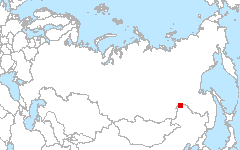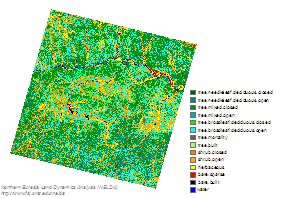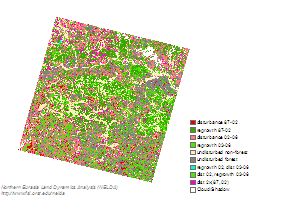 Amur
53.1°N 123.1°E
Amur
53.1°N 123.1°E
The test site is located on the border between the Amur Oblast of the Russian Federation and the northwest of the Heilongjiang Province of the People's Republic of China.
Site Investigators
- Tatiana Loboda, University of Maryland
- Guoqing Sun , University of Maryland
- Zhiyu Zhang, University of Maryland
Site Description
The site is located in southern taiga of Eastern Siberia and Northern China. The site spans across the Amur river stretching between the Amur Oblast in the north and Daxinganling Prefecture, including the Hulun Buir Grassland along the Amur river and the Songnen Plain in the eastern part of the site, in the south. The elevation ranges between 200 and 1400 m above sea level with the mean elevation around 600m. The region's ecosystems developed in cold climatic conditions with mean annual temperatures ranging between -5°C in the north to 4°C in the south and are characterized by large inter-annual variability. The intra-annual variability in temperatures is also very large (~40°C) and is explained by the extremely continental climate of the study site (Stolbovi and McCallum, 2002). The climate is characterized by long cold winters and short hot summers with roughly 100-180 frost-free days per year. The site receives 200-400mm of rainfall annually but has high levels of evapotranspiration (600-800mm annually) subsequently resulting in moisture deficit conditions and presence of dwarf-shrubs and ephemeroids. The site has a considerable above and below ground living biomass denisty with the net primary production of carbon around 0.21-0.28 kg/m2/y (Stolbovoi and McCallum, 2002). The forests are mainly distributed over the mountains. Cold-temperature needle-leaf forests, dominated by Larix gmelii are distributed in the north part of Daxinganlin (the Greater Xing'an Mountains), while the deciduous broadleaf forests of the temperate zone, dominated by Quercus mongolica, Populus davidiana, and Betula platyphylla, are distributed in the middle and southern parts of Daxinganling.
Download
- Site Report (3.4 MB - PDF)
- Land Cover (preview - 233kB,png) (data - 10.3MB, geoTiff.zip)
- Land Cover Change (preview - 188kB,png) (data - 7.1MB, geoTiff.zip)
- Source Landsat imagery available via LARSE Image Database
Global Map Analysis


